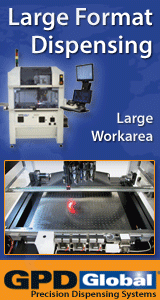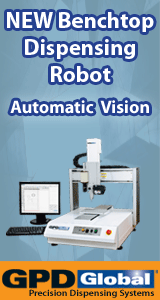Printed Circuit Board Assembly & PCB Design Forum
SMT electronics assembly manufacturing forum.
- SMTnet
- »
- Electronics Forum
- »
- Loading leadless parts(passives)by hand
Loading leadless parts(passives)by hand
![]()
![]() We are a small division. We are starting up a leadless li...
- Mar 03, 1999
by
We are a small division. We are starting up a leadless li...
- Mar 03, 1999
by
![]()
![]() | We are a small division. We are starting up a leadless ...
- Mar 03, 1999
by
davef
| We are a small division. We are starting up a leadless ...
- Mar 03, 1999
by
davef
![]()
![]()
![]() Hi,
For hand placement you should see about 150-200 ppm...
- Mar 04, 1999
by
SMTASSY
Hi,
For hand placement you should see about 150-200 ppm...
- Mar 04, 1999
by
SMTASSY
![]()
![]()
![]() | Hi,
|
| For hand placement you should see about 150-2...
- Mar 04, 1999
by
davef
| Hi,
|
| For hand placement you should see about 150-2...
- Mar 04, 1999
by
davef
![]()
![]()
![]() | Mario: Interesting analysis. What does "Hand placem...
- Mar 04, 1999
by
SMTASSY
| Mario: Interesting analysis. What does "Hand placem...
- Mar 04, 1999
by
SMTASSY
![]()
![]()
![]() Clarissa,
Dave had good suggestions. We load several b...
- Mar 05, 1999
by
Clarissa,
Dave had good suggestions. We load several b...
- Mar 05, 1999
by
![]()
![]() | Clarissa,
|
| Dave had good suggestions. We load sev...
- Mar 06, 1999
by
davef
| Clarissa,
|
| Dave had good suggestions. We load sev...
- Mar 06, 1999
by
davef
![]()
![]()
![]() | Clarissa,
|
| We place the parts using two different...
- Mar 06, 1999
by
davef
| Clarissa,
|
| We place the parts using two different...
- Mar 06, 1999
by
davef
![]()
![]()
![]() | Clarissa,
|
| Dave had good suggestions. We load sev...
- Mar 06, 1999
by
davef
| Clarissa,
|
| Dave had good suggestions. We load sev...
- Mar 06, 1999
by
davef
![]()
![]()
![]() Dave,
We have had very few changes in the board. I jus...
- Mar 09, 1999
by
Dave,
We have had very few changes in the board. I jus...
- Mar 09, 1999
by
![]()
![]() Dave,
Thanks for the information. If I ever have to do...
- Mar 09, 1999
by
Dave,
Thanks for the information. If I ever have to do...
- Mar 09, 1999
by
![]()
![]() Regarding a Fristch semi (using tube feeders on the left s...
- Mar 09, 1999
by
SMTASSY
Regarding a Fristch semi (using tube feeders on the left s...
- Mar 09, 1999
by
SMTASSY
![]()
![]()
![]() Maybe it is all what you get use to. Our assemblers like ...
- Mar 09, 1999
by
Maybe it is all what you get use to. Our assemblers like ...
- Mar 09, 1999
by
![]()
![]() Yes Nancy when it comes to PLCC or anything bigger then So...
- Mar 09, 1999
by
SMTASSY
Yes Nancy when it comes to PLCC or anything bigger then So...
- Mar 09, 1999
by
SMTASSY
![]()
- SMTnet
- »
- Electronics Forum
- »
- Loading leadless parts(passives)by hand







